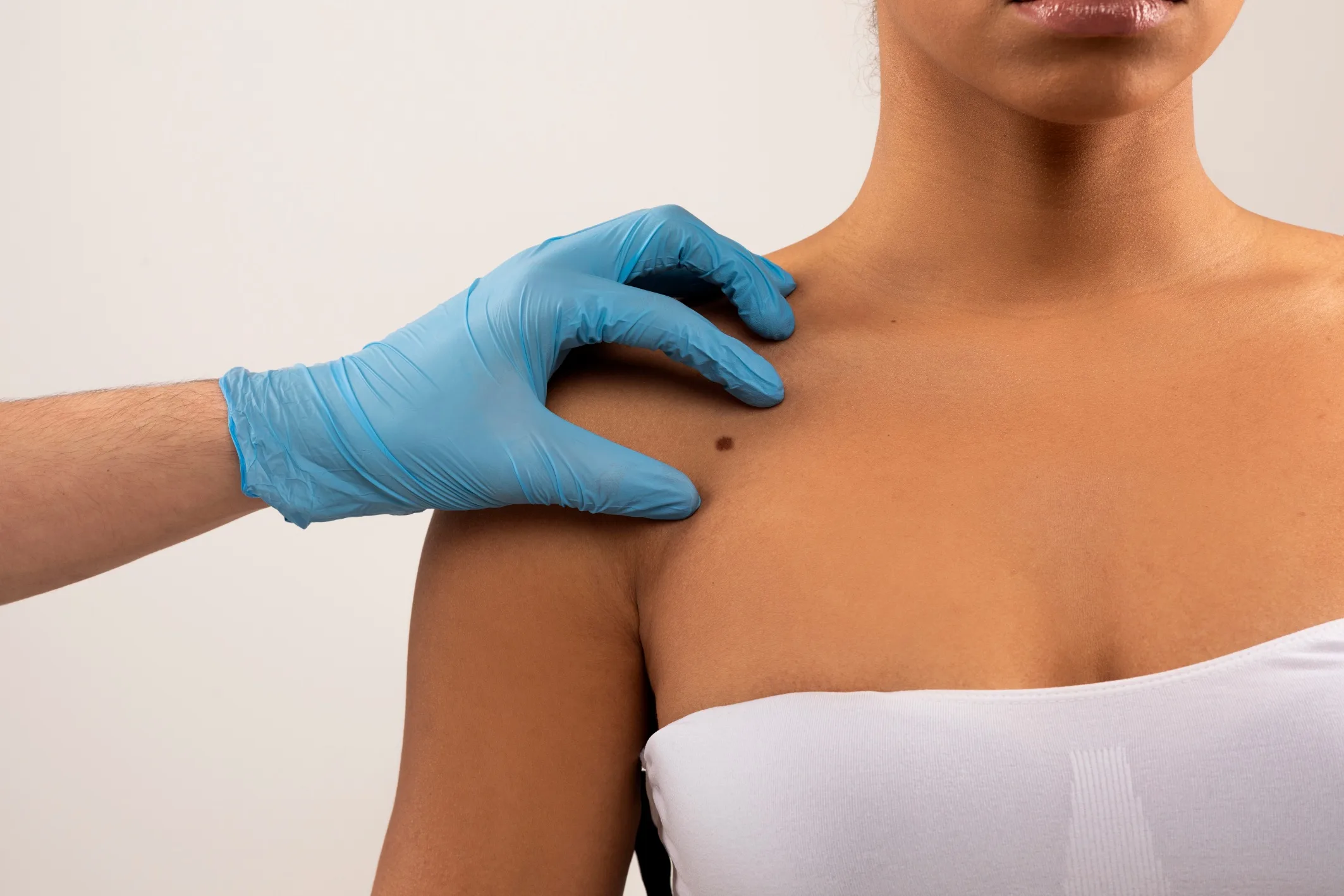While skin cancer is more common in adults aged 50 and above, melanoma incidence rates among younger age groups, particularly those in their 20s and 30s, have been increasing in recent years. Here are the five key warning signs of melanoma that you shouldn’t ignore, along with tips for protecting your skin and reducing your risk of skin cancer.
Understanding Melanoma
Like other types of cancer, melanoma develops when errors in the DNA of skin cells cause them to grow and multiply. Melanoma can affect any skin area, although it is usually seen in sun-exposed regions such as the face, neck, arms, and legs. In rare cases, it can affect other areas, such as the palms of the hands, soles of the feet, and under the nails.
The ABCDEs of Melanoma
While most moles are harmless, some may undergo changes that increase the risk of melanoma development. Regularly inspecting your moles allows you to monitor for any suspicious changes.
Here are five red flags you shouldn’t ignore
- Asymmetry: One-half of the mole or lesion doesn’t match the other. Healthy moles are typically symmetrical, and any asymmetry could cause concern.
- Border: The mole’s edges are uneven, ragged, or blurred. Instead of smooth, well-defined borders, melanomas may have irregular or poorly defined edges.
- Colour: The mole has multiple colours or shades, including black, brown, blue, red, or white. While benign moles are usually uniform in colour, melanomas may exhibit a variety of colours or pigmentation patterns.
- Diameter: The mole is larger than the size of a pencil eraser (approximately 6 millimetres) or has grown over time. Melanomas often have a larger diameter than benign moles, and a healthcare professional should evaluate any significant changes in size.
- Evolution: A dermatologist should closely monitor and assess any changes in the appearance or characteristics of a mole.
Protecting Your Skin
In addition to understanding the warning symptoms of melanoma, you should take precautions to protect your skin from the sun’s damaging ultraviolet (UV) radiation. Here are some tips:
- Make sunscreen part of your daily facial routine.
- Choose sunscreen with SPF 30 or higher.
- Reapply sunscreen every two hours after swimming or sweating.
- Seek shade, especially during peak sun hours of 10 a.m. to 4 p.m.
- Wear protective clothes such as wide-brimmed hats, sunglasses, long-sleeved shirts and slacks.
- Avoid tanning beds and sunlamps. These generate damaging UV radiation and raise the risk of skin cancer.
- Perform frequent self-examinations of your skin to look for changes or abnormalities.
- See a dermatologist once a year for a professional skin examination.
Seeking Prompt Treatment
If you are concerned about changes in your skin, arrange an appointment with a dermatologist. Early identification and treatment is crucial for improving melanoma’s prognosis and lowering the risk of consequences.
Your dermatologist may do a comprehensive skin check, assess any worrisome moles or lesions, and prescribe further tests or treatment if required.
Read more about Melanoma, and why men are at more risk of getting this cancer.
Melanoma: Why Men Are More Likely to Die From This Skin Cancer
About Marray Hewlett
Murray is the CEO of Affinity Health. South Africa’s leading health coverage provider, offering you a range of options at affordable rates, including access to the widest national provider network.



![women [longevity live]](https://longevitylive.com/wp-content/uploads/2020/01/photo-of-women-walking-down-the-street-1116984-100x100.jpg)










